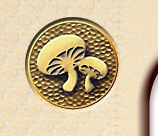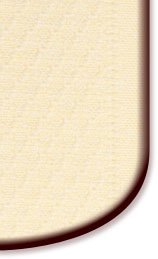


Agaricus bisporus
Preparation and Serving Suggestions:
Lightly rinse, brush, or wipe with a damp paper towel. Trim the stem and use in the same way as the cap. Grill, broil, or sauté. Great appetizer, sandwich, or meat replacement.

Portabella and Crimini mushrooms are the more flavorful cousins of the white button mushroom. Criminis are tan to brown in color with a firm, buttery texture and a flavor
similar to white button mushrooms but more intense. They are picked while they are still closed, with their veil covering the gill surface. The Portabellas are allowed to ripen further and open up revealing their dark gills and mature spores. As a result of this further ripening, they have a rich, robust mushroom taste and a texture that has been compared to filet mignon. Recent scientific studies have suggested that substances found in Agaricus may play a role in breast cancer prevention and treatment, and in modulating the risk of coronary heart disease.
Reported Health Benefits:
While better known for its culinary qualities than its medicinal, there have been reports of several health benefits provided by Agaricus mushrooms. Agaricus has been documented as a traditional treatment for diabetes. Recent work at the City of Hope Cancer Center in Los Angeles, CA, has suggested that substances found in Agaricus bisporus may play a role in breast cancer prevention and treatment. In addition, it has been found to contain compounds with antitumor, immunomodulatory, cholesterol controlling, and kidney tonic effects.
Selected References:
Bankhead, Charles. 2000. Mushrooms May Play Role in Breast Cancer Prevention and Treatment. WebMD Medical News, http://webmd.lycos.com/content/article/1728.53385
Gray, A. M. and P. R. Flatt. 1998. Insulin-releasing and insulin-like activity of Agaricus campestris (mushroom). J Endocrinol. May; 157(2):259-66
Gruter, A., et al. 1990. Antimutagenic effects of mushrooms. Mut Res. 231:243-249
Hobbs, Christopher, L. Ac. 1995; Medicinal Mushrooms, an Exploration of Tradition, Healing, and Culture; Botanica Press, Santa Cruz, CA pg. 175
Jenneman, R., et al. 1999. Basidiolipids from Agaricus are novel immune adjuvants. Immunobiology. Jun;200(2): 277-89
Parslew, R., et al. 1999. The antiproliferative effect of lectin from the edible mushroom (Agaricus bisporus) on human keratinocytes: Preliminary studies on its use in psoriasis. Br J Dermatol. Jan; 140(1)56-60
Poongkode, G.K. and S. Sakthi. 2001. Dietary Efficacy of the Edible Mushroom Agaricus bisporus (J. Lge) Imbach in Modulating the Risk of Coronary Heart Disease in Rats. Perspectives of Medicinal Mushrooms in Healthcare and Nutrition in the 21st Century. 12-14 Septemeber Kiev, Ukraine. Abstract in International Journal of Medicinal Mushrooms 3(2-3). Pg. 200.
Swanston-Flatt, S. K., et al. 1989. Glycaemic effects of traditional European plant treatments for diabetes studies in normal and streptozotocin diabetic mice. Diabetes Res. 10:69-73
Wasser, S. P. and A. L. Weis. 1999. Medicinal properties of substances occurring in higher basidiomycetes mushrooms: current perspectives (Review). Intern J of Med Mushrooms. Vol. 1:31-62
© Copyright 2005 Phillips Mushroom Farms, Inc.